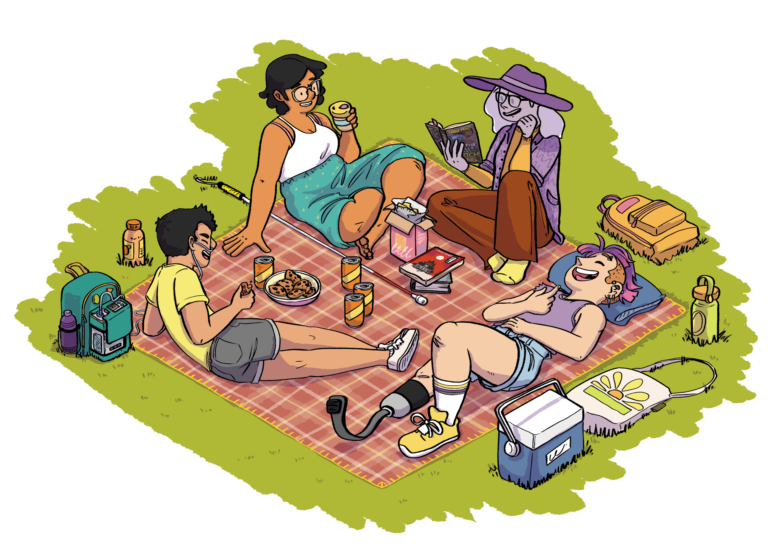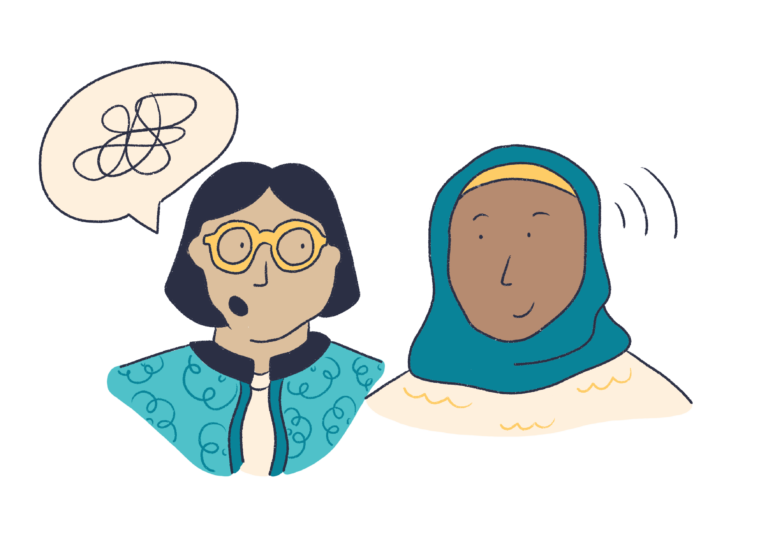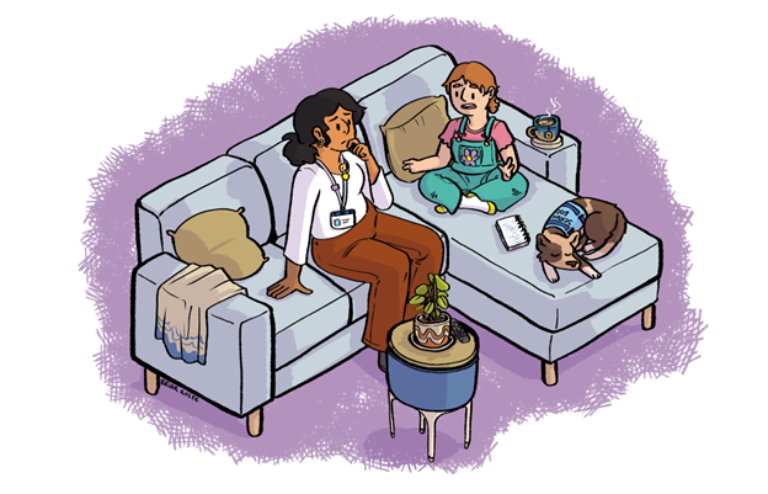How to be a child safe NDIS service provider
All children and young people have the right to be safe. Keeping children safe from harm is everyone’s responsibility.
Disabled children, as a group, have a nearly four times higher risk of experiencing violence than their non-disabled peers (1).
This makes it especially important for NDIS service providers to understand your role in creating safe, inclusive, and empowering supports.
Being a child safe organisation means actively listening to children and young people, respecting their rights, and preventing harm.
On this page, you’ll find information, resources and tools to help you put safeguards in place to keep disabled young people safe.

National Principles for Child Safe Organisations
The National Principles for Child Safe Organisations provide a nationally consistent approach to creating organisational cultures that foster child safety and wellbeing.
They are not mandatory but implementing them shows a strong commitment to child safety and wellbeing.
Watch this video from the Australian Human Rights Commission to learn more.

State and territory child safe requirements
Organisations that work with children and young people must meet existing child safe requirements in your state or territory.
This includes child safe standards that are based on the National Principles, and background check schemes for those working or volunteering with children and young people.
Links to state and territory child safe requirements and resources are available on the Australian Human Rights Commission’s website.
Working with Children Checks
Providers and workers supporting children must have a Working with Children Check under state and territory laws. This helps protect children from harm.
The National Principles for Child Safe Organisations
Implementing these 10 principles can help you create an organisational culture that fosters child safety and wellbeing.
Child safety and wellbeing is embedded in organisational leadership, governance and culture.
Children and young people are informed about their rights, participate in decisions affecting them and are taken seriously.
Families and communities are informed and involved in promoting child safety and wellbeing.
Equity is upheld and diverse needs respected in policy and practice.
People working with children and young people are suitable and supported to reflect child safety and wellbeing values in practice.
Processes to respond to complaints and concerns are child focused.
Staff and volunteers are equipped with the knowledge, skills and awareness to keep children and young people safe through ongoing education and training.
Physical and online environments promote safety and wellbeing while minimising the opportunity for children and young people to be harmed.
Implementation of the national child safe principles is regularly reviewed and improved.
Policies and procedures document how the organisation is safe for children and young people.
Practical tools for implementing the National Principles
The Australian Human Rights Commission has develop a learning hub and practical tools to help you implement the National Principles, including:
- An introductory self-assessment tool for organisations
- Online learning modules
- A Charter of Commitment to Children and Young People
- A Child Safety and Wellbeing Policy template
- An example Child Safe Code of Conduct

Cultural safety and the National Principles
The National Office for Child Safety partnered with SNAICC to create resources that support organisations working with Aboriginal and Torres Strait Islander children, young people and communities to implement the National Principles.
The Keeping Our Kids Safe guide helps organisations to be more child safe in a culturally safe way.
As an NDIS service provider, implementing the National Principles for Child Safe Organisations shows a strong commitment to child safety and wellbeing.
Currently, the National Principles are not mandatory. However, if your organisation works with children and young people, it must meet state or territory requirements.
You can implement the National Principles at the same time. This shows disabled young people and their families your commitment to child safety.
Key child safe considerations for NDIS service providers
Workers should be trained in child safety so they understands their responsibilities, feel confident responding to concerns, and support a child safe culture. They should understand your organisation’s child safe policies and procedures, and read them regularly to stay up to date.
It’s also important for workers to understand your organisation’s feedback and complaints processes. Training should explain their responsibilities, how to support young people to speak up for themselves, and how to explain the complaints process in an accessible and youth-friendly way.
Other training, like cultural safety or disclosure training, also supports child safety in your organisation.
Disabled young people have the right to feel safe and have their concerns taken seriously.
As an NDIS service provider, making your complaints process accessible and youth-friendly helps safeguard disabled young people by ensuring they can easily understand how to speak up, raise concerns, and feel safe doing so.
Visit our Communicating with disabled young people webpage for guidance and resources to support you.
When an organisation takes reports of abuse or neglect seriously and investigates them properly, it helps keep disabled young people safe. It also builds trust, showing that the organisation is committed to safety and encourages others to speak up if they have concerns.
Make sure all workers know how to report abuse or neglect, and that your organisation has clear steps for how to do this. Workers should also understand the laws about reporting, including mandatory reporting, in their state or territory.
The Keeping disabled young people safe section on this webpage explains how to report abuse or neglect. It also shares where disabled young people can go for support.
Actively model child safe values through leadership, policies, and everyday practice. Encourage open communication and youth participation.
Visit YERP (Youth Engagement Resource Platform) for resources to support meaningful youth engagement and good practice.
Review your services to identify and manage any potential risks to children and young people.
Adapt materials and practices to meet the communication and access needs of disabled young people.
Evaluate your child safety strategies to ensure they remain effective, up to date, and centred on the rights and voices of disabled children and young people.

Helpful guides
YERP (Youth Engagement Resource Platform) has a set of comprehensive safety guides about workers’ responsibilities to keep both young people and yourself safe at work.
Guides include:
- Consent when working with young people
- Wellbeing and self-care
- Creating safer spaces
- How to set up a youth-friendly complaints process
- Boundaries and privacy
- How to respond to disclosures
- Duty of Care, Mandatory and Safe Reporting
Most of the resources are useful for workers across Australia, but YERP was created for youth workers in Victoria, so some of the laws and processes only apply in Victoria.

Guide to creating a child safe organisation
Download this guide by the Commission for Children and Young People to learn more about creating a child safe organisation.
Keeping disabled young people safe
This section explains how to report abuse or neglect. It also shares where disabled young people can go for support.
Report abuse or neglect
Reporting child abuse and neglect is everyone’s responsibility. If you believe a child or young person is experiencing abuse or neglect, you should report it.
You do not need to be certain that there is abuse or neglect of a child or young person to contact the authorities. If you are unsure, call the relevant authority to discuss your concerns.
Child abuse and neglect refers to any behaviour or treatment by parents, carers, support workers, other adults or older adolescents that causes (or could cause) physical or emotional harm to a child or young person.
Visit the Australian Institute of Family Studies’ Reporting child abuse and neglect webpage for service providers to find out how to report child safety concerns in your state or territory.
Call 000 if you believe a child or young person is in immediate danger.
Report child safety concerns
Mandatory reporting
Some people supporting disabled young people are legally required to report if they believe a child is being abused or neglected.
Visit the Australian Institute of Family Studies’ website below for more information about the requirements in your state or territory.
To learn more about your responsibilities as an NDIS service provider, including reportable incidents, visit the webpage below.
Mental health support for children and young people
Call 000 if you believe a child or young person is in immediate danger.
Kids Helpline is Australia’s only free (even from a mobile), confidential 24/7 online and phone counselling service for young people aged 5 to 25.
Young people can contact qualified counsellors at Kids Helpline anytime on 1800 55 1800 or chat to them on the Kids Helpline website. No problem is too big or too small.
The Australian Institute of Family Studies has a created a webpage for service providers that lists the contact details and links to helplines, telephone and online counselling services for children, young people and adults in your state and territory.